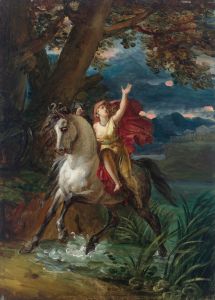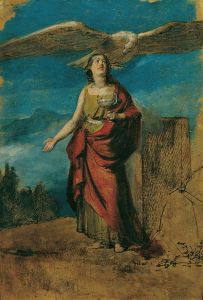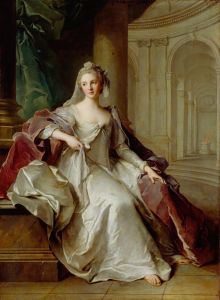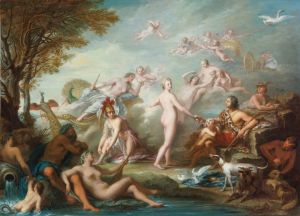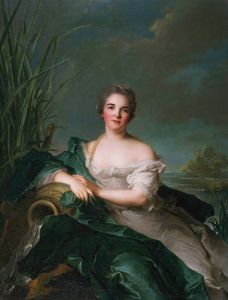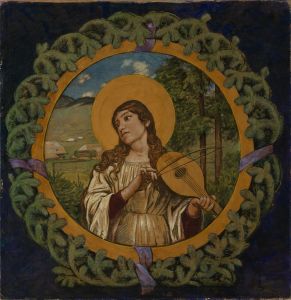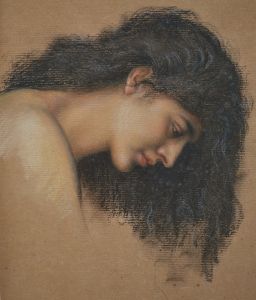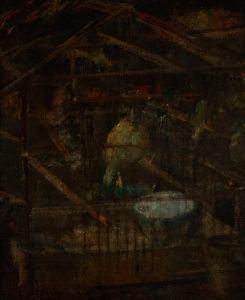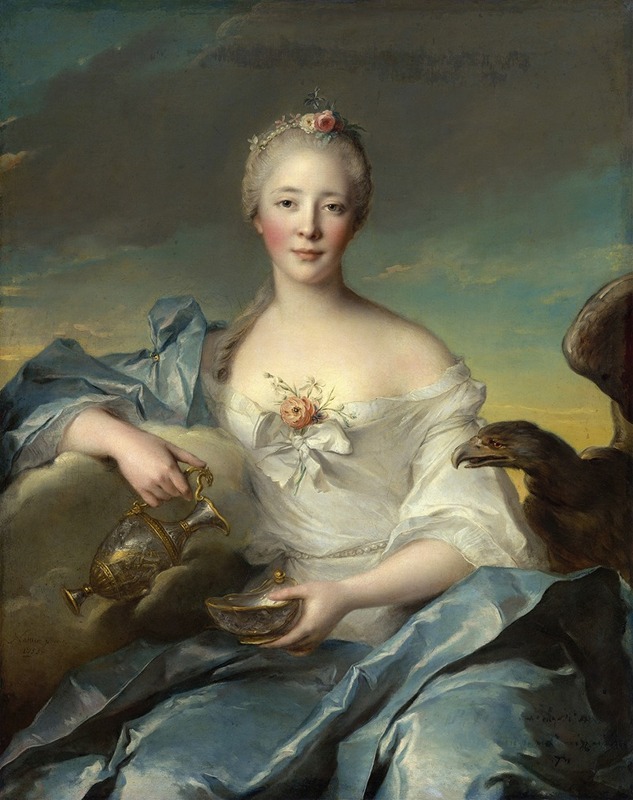
Madame Le Fèvre de Caumartin as Hebe
A hand-painted replica of Jean-Marc Nattier’s masterpiece Madame Le Fèvre de Caumartin as Hebe, meticulously crafted by professional artists to capture the true essence of the original. Each piece is created with museum-quality canvas and rare mineral pigments, carefully painted by experienced artists with delicate brushstrokes and rich, layered colors to perfectly recreate the texture of the original artwork. Unlike machine-printed reproductions, this hand-painted version brings the painting to life, infused with the artist’s emotions and skill in every stroke. Whether for personal collection or home decoration, it instantly elevates the artistic atmosphere of any space.
Jean-Marc Nattier's painting Madame Le Fèvre de Caumartin as Hebe is a notable example of 18th-century French portraiture. Created in 1753, the artwork depicts Madame Le Fèvre de Caumartin, a member of the French aristocracy, in the guise of Hebe, the Greek goddess of youth. This painting is characteristic of Nattier's style, which often combined portraiture with allegorical or mythological themes, a popular trend among the French elite during the Rococo period.
In the portrait, Madame Le Fèvre de Caumartin is shown wearing a flowing, elegant gown, with soft, pastel tones that are typical of Rococo aesthetics. She is depicted holding a cup, a reference to Hebe's role as the cupbearer to the gods in Greek mythology. The inclusion of an eagle, often associated with Zeus, further emphasizes the mythological theme. Nattier's skillful use of light and texture highlights the sitter's delicate features and luxurious attire, underscoring her status and refinement.
Jean-Marc Nattier (1685–1766) was a prominent French painter known for his portraits of the nobility, often portraying his subjects in allegorical or mythological roles. His works were highly sought after by the aristocracy, as they allowed sitters to be idealized and associated with classical virtues or divine qualities. Nattier's ability to blend realism with idealization made him a favorite among his contemporaries.
The painting reflects the cultural and artistic values of mid-18th-century France, where the aristocracy sought to align themselves with classical antiquity and its ideals. By portraying Madame Le Fèvre de Caumartin as Hebe, Nattier not only flattered his subject but also connected her to themes of youth, beauty, and divine favor. This type of allegorical portrait was particularly popular during the reign of Louis XV, as it resonated with the Rococo era's fascination with mythology, elegance, and the celebration of individual identity within a classical framework.
Today, Madame Le Fèvre de Caumartin as Hebe is recognized as a fine example of Nattier's work and of the broader trends in 18th-century French art. The painting is part of the collection at the Musée des Beaux-Arts in Rouen, France, where it continues to be admired for its artistic merit and historical significance.





